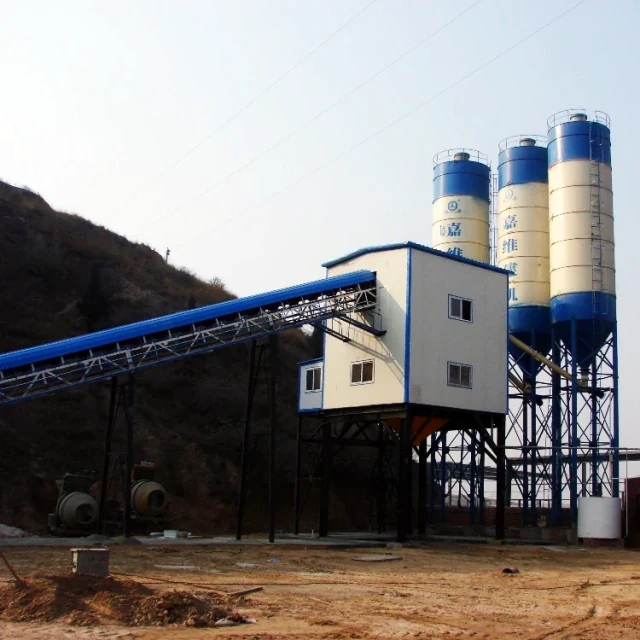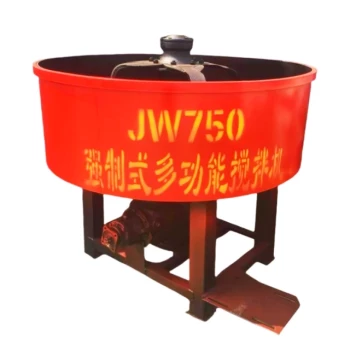Introduction
Cylinder leaks in concrete mixing stations aren’t just minor nuisances—they lead to costly downtime, safety risks, and compromised mix quality. This guide cuts through the complexity with actionable strategies to identify leakage sources, execute precise repairs, and implement preventive measures that extend equipment lifespan. Whether you’re dealing with internal seal failures or environmental wear, these field-tested protocols prioritize cost-efficiency and operational reliability.
Causes and Impacts of Cylinder Leakage
Differentiating Internal vs. External Leakage Symptoms
Internal leaks (e.g., failed piston seals) often manifest as:
- Gradual pressure loss despite no visible fluid escape
- Erratic cylinder movement or "drift" under load
- Increased hydraulic oil temperature due to fluid bypass
External leaks (e.g., rod seal damage) show clearer signs:
- Oil pooling around the cylinder base or rod gland
- Contaminated concrete slurry from compromised wiper seals
- Audible hissing during operation (in pneumatic systems)
Ever noticed inconsistent cylinder speed? That’s often the first whisper of internal leakage.
How Environmental Factors Accelerate Component Wear
Concrete mixing environments assault cylinders with:
- Abrasive particles: Cement dust and aggregate fines degrade rod surfaces, accelerating seal wear.
- Chemical exposure: Alkaline slurry corrodes chrome-plated rods, creating pitting that shreds seals.
- Temperature swings: Thermal expansion/contraction stresses seals, reducing elasticity over time.
Pro Tip: In coastal areas, salt-laden moisture can halve seal lifespan—opt for nitrile or polyurethane materials.
Proactive Maintenance and Repair Protocols
Step-by-Step Guide to Piston Rod Alignment and Seal Replacement
- Isolate and depressurize the system—lock out hydraulic power sources.
- Inspect the rod: Run a clean cloth along its length; scratches deeper than 0.05 mm require rechroming.
- Seal removal: Use hooked picks to extract old seals without gouging gland walls.
- Alignment check: Mount a dial indicator on the rod; >0.1 mm runout demands re-machining mounts.
- Lubricate new seals: Soak polyurethane seals in warm hydraulic oil for 30 minutes before installation.
Think of misalignment like a bent axle—even the best seals can’t compensate for mechanical imbalance.
Selecting Lubricants and Oil Mist Separators for Harsh Conditions
- High-load applications: ISO VG 68 hydraulic oil with anti-wear additives (e.g., zinc dialkyldithiophosphate).
- Dusty sites: Install desiccant breathers with 10-micron filtration to stop abrasive ingress.
- Oil mist mitigation: Centrifugal separators reduce airborne oil by 90%, preventing seal swelling.
Long-Term Reliability Enhancements
Contamination Control: Filter Systems and Cleaning Best Practices
- Double filtration: Pair a 25-micron suction filter with a 3-micron pressure filter.
- Weekly fluid checks: Use patch tests—if oil leaves a visible residue on blotter paper, flush the system.
- Rod wiper upgrades: Spring-loaded multi-lip wipers outperform standard designs in wet environments.
Case Study: A precast plant reduced cylinder replacements by 60% after implementing magnetic drain plugs to capture ferrous particles.
Predictive Maintenance Checklists for Concrete Machinery
Monthly Tasks:
- Measure hydraulic fluid acidity (TAN >1.5 mg KOH/g signals oxidation).
- Inspect rod surfaces under UV light—microcracks fluoresce under 365 nm wavelength.
- Log cycle counts; seal wear accelerates after 500,000 full-stroke cycles.
Annual Overhauls:
- Replace all elastomeric components regardless of visible wear.
- Re-torque mounting bolts to spec (typically 30% higher than standard values for vibrating equipment).
Conclusion: Turning Leak Management into Competitive Advantage
Cylinder reliability isn’t about heroic repairs—it’s a system of disciplined contamination control, precision alignment, and material science. By adopting these strategies, operators can transform leakage from a crisis into a managed variable. For operations relying on robust equipment like Garlway winches and mixing systems, integrating these protocols ensures consistent performance where it matters most: in the unforgiving world of concrete production.
Final Action Step: Start with contamination control—audit your hydraulic fluid cleanliness today. The next cylinder failure might be preventable with a $20 filter.
Related Products
- HZS75 Concrete Batching Plant Cement Mixer Price Concrete Mixer Bunnings Mixing Plant
- HZS180 Ready Mix Concrete Plant for Foundations with Sand and Cement
- Portable Concrete Mixer Machine Equipment for Mixing Concrete
- JW1000 Mobile Cement Mixer Concrete Mixer Truck and Batching Plant
- HZS120 Ready Mix Concrete Batching Plant Commercial Mud Cement Mixer
Related Articles
- How to Choose Between Concrete and Stabilized Soil Mixing Plants for Optimal Project Performance
- How to Protect Concrete Mixing Stations From Extreme Weather Damage
- How to Prevent Cold-Weather Lubrication Failures in Concrete Mixing Stations
- How Commercial Concrete Mixing Plants Cut Costs and Boost Project Flexibility
- How to Prevent Equipment Failure in Concrete Mixing Stations: A Safety Inspector’s Guide




















